Welcome to a captivating journey into the vibrant cultures of Cameroon, Congo, and the Western Bantu peoples! In this article, we will delve deep into the traditions, arts, languages, and culinary delights of these fascinating communities.
Cameroon, located in Central Africa, boasts a diverse range of ethnic groups, each with its own unique cultural practices and belief systems. Similarly, Congo, situated along the equator, is home to a wealth of indigenous cultures that have flourished over centuries. Lastly, the Western Bantu peoples, spread across various countries in Africa, have contributed immensely to the tapestry of African cultures.
Key Takeaways:
- Cameroon, Congo, and Western Bantu cultures are characterized by their vibrant traditions and rich heritage.
- These regions’ geographical locations have played a significant role in shaping their cultures.
- Historical factors, including colonialism and migrations, have influenced the diverse cultural practices found in these communities.
- Music, dance, visual arts, and crafts are integral parts of the cultural expression in Cameroon, Congo, and among Western Bantu people.
- Language diversity is a defining feature of these cultures, reflecting the rich linguistic heritage of the region.
Geographical Overview
Before we delve into the cultures of Cameroon, Congo, and the Western Bantu peoples, let’s first gain an understanding of their geographical locations. Geographically, Cameroon is situated in Central Africa, bordering the Gulf of Guinea to the southwest.
On the other hand, Congo is located in Central Africa, sharing borders with several countries including Gabon, Cameroon, and the Democratic Republic of the Congo. The Western Bantu peoples, spread across these regions, are known for their rich cultural diversity.
Cameroon, with its lush rainforests, high plateaus, and coastal plains, boasts a diverse landscape that influences the way of life of its people. Congo, characterized by vast rainforests and the Congo River basin, offers a unique environment that shapes the culture and traditions of its inhabitants.
The Western Bantu peoples, including ethnic groups such as the Kongo, Yaka, and Teke, are dispersed across Cameroon, Congo, and neighboring countries. Their geographical distribution has contributed to the distinctiveness and variety of their cultural practices.
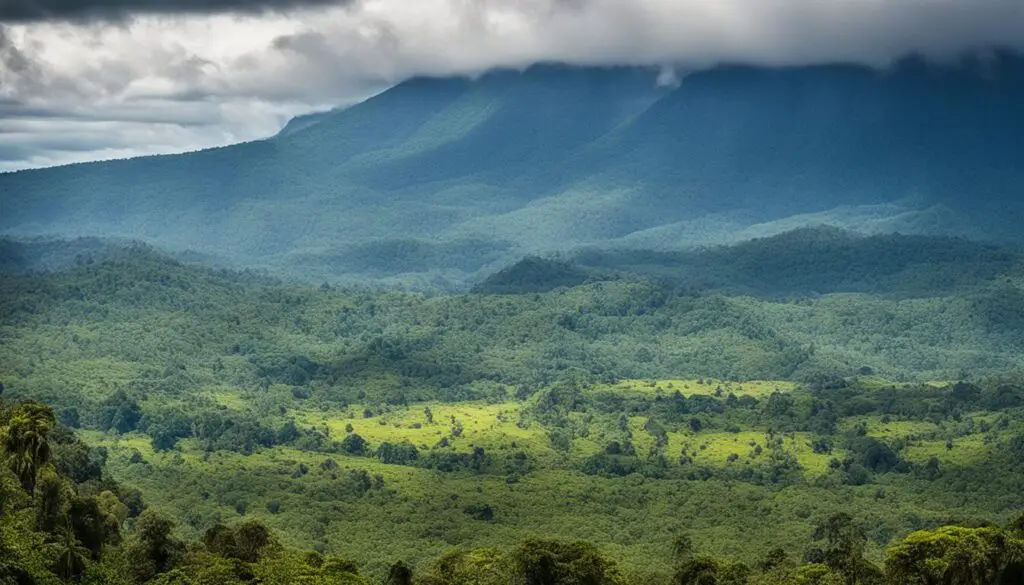
Historical Influences
A look into the history of Cameroon, Congo, and the Western Bantu peoples reveals the various influences that have shaped their cultures. These influences span from the colonial era to migrations, which have left an indelible mark on the rich heritage of these regions.
During the period of European colonialism, Cameroon and Congo were both colonized by different European powers, which significantly impacted their cultures. Cameroon was colonized by Germany, and later divided between Germany and France, while Congo was colonized by Belgium under King Leopold II.
These colonial powers not only influenced the political and economic landscape but also introduced aspects of their own cultures, such as language, religion, and administration systems. This cultural exchange resulted in a fusion of indigenous practices with European influences, creating unique cultural identities.
Furthermore, migrations have played a pivotal role in shaping the diversity of cultures in Cameroon, Congo, and among the Western Bantu peoples. Over centuries, various tribes and groups have migrated across these regions, bringing with them their traditions, languages, and customs.
The migration patterns of these Bantu-speaking peoples have led to the proliferation of diverse subgroups and cultures, contributing to the rich tapestry of cultural practices and beliefs found in these areas today.
As a result of historical influences, the cultures of Cameroon, Congo, and the Western Bantu peoples are characterized by a blend of indigenous traditions, colonial legacies, and the influences of diverse ethnic groups.
Image:
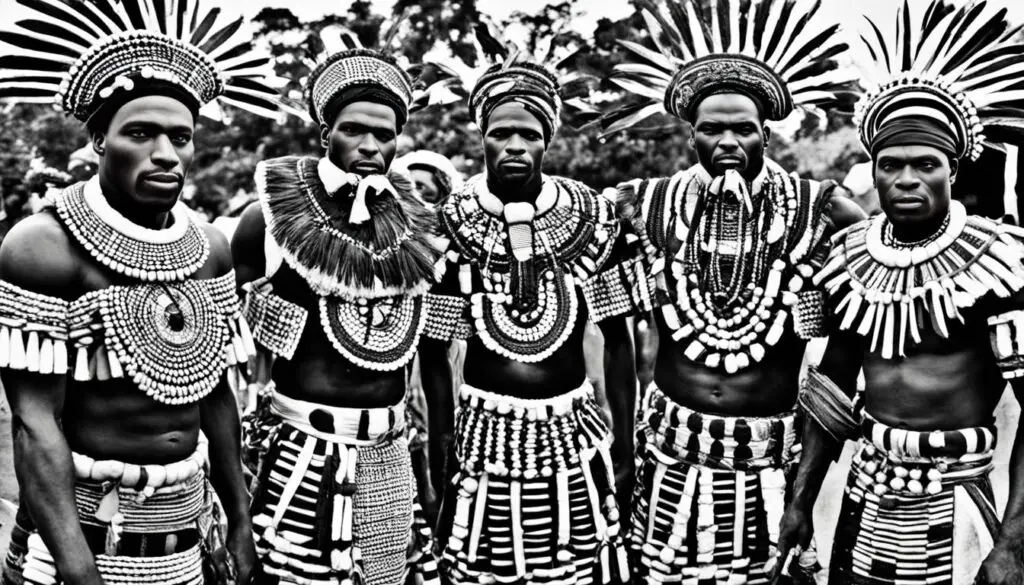
Traditional Practices and Beliefs
Delve into the rich tapestry of traditional practices and beliefs among the Cameroon, Congo, and Western Bantu peoples. These cultures, with their deep-rooted heritage and diverse customs, offer a fascinating glimpse into the spiritual and social aspects of life.
From generation to generation, rituals and ceremonies have played a pivotal role in these communities, connecting individuals with their ancestors and the natural world. The rituals often mark important milestones, such as birth, coming of age, marriage, and death, honoring the transitions and stages of life.
The spiritual beliefs of the Cameroon, Congo, and Western Bantu peoples are as diverse as they are profound. Animism, ancestral worship, and the veneration of nature are common themes in their spiritual practices. Landscapes, rivers, and specific animals hold sacred meanings, and the cosmologies and oral traditions passed down over centuries shape their understanding of the universe.
Customs and traditions vary within and across these regions, reflecting their unique histories and cultural influences. The preservation of these traditional practices and beliefs ensures the continuity of the collective wisdom and the cultural identity of these communities.
Rituals and Ceremonies
Rituals and ceremonies are an integral part of the fabric of life for the Cameroon, Congo, and Western Bantu peoples. Birth rituals celebrate new life and welcome infants into the community, while initiation ceremonies mark the transition from adolescence to adulthood. Marriage ceremonies unite couples and their families, emphasizing the communal bonds and responsibilities that come with marriage.
These rituals are often accompanied by music, dance, and elaborate costumes, creating a vibrant spectacle that engages all the senses.
Belief Systems
The belief systems of these cultures are deeply intertwined with spiritual practices. Ancestral worship is a common thread, wherein ancestors are revered and seen as intermediaries between the living and the divine. The natural world holds immense spiritual significance, with each element believed to possess a spiritual essence.
These belief systems foster a sense of interconnectedness, emphasizing the importance of maintaining harmony with nature and the spirits.
By immersing ourselves in the traditional practices and beliefs of the Cameroon, Congo, and Western Bantu peoples, we gain a deeper appreciation for their unique cultural heritage and the profound wisdom passed down through generations.
Music and Dance
Immerse yourself in the captivating world of music and dance as we journey through the vibrant traditions of Cameroon, Congo, and the Western Bantu peoples. Music and dance serve as an integral part of their cultural expression, weaving together stories, emotions, and community bonds.
As we embrace the rhythm, we encounter a diverse array of musical instruments that echo through the landscapes of these regions. From the melodious sounds of the balafon to the soulful beats of the ngoma drum, each instrument has its unique voice, representing the spirit of the people.
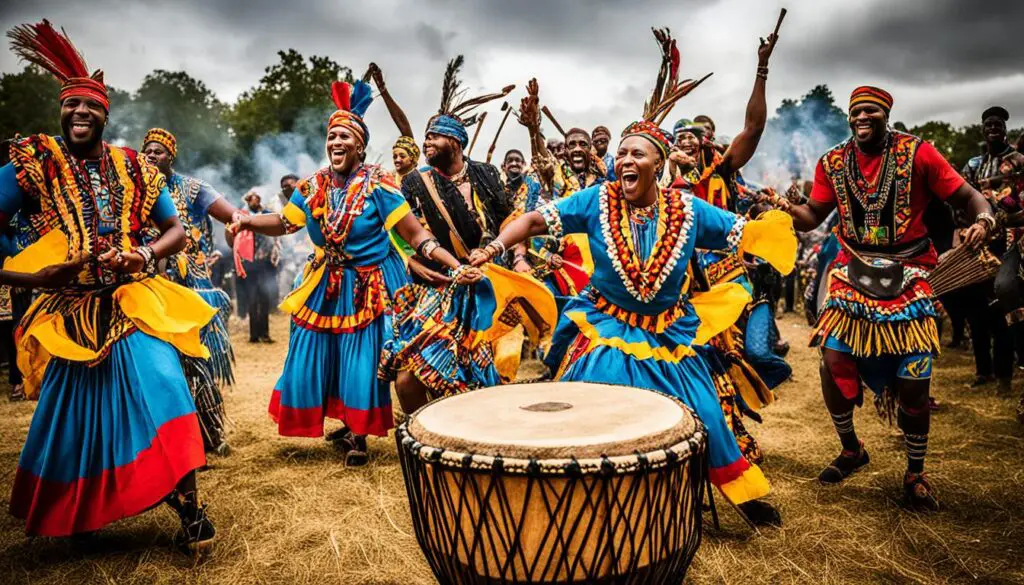
Step into the world of traditional dances, where movement becomes a language of celebration, storytelling, and social cohesion. Through graceful gestures, rhythmic footwork, and elaborate costumes, these dances communicate the values and heritage of the Cameroon, Congo, and Western Bantu cultures. From the energetic Makossa dance to the mesmerizing Soukous, each dance form carries its distinct cultural significance.
Music and dance also play a vital role in cultural ceremonies and rites of passage. They accompany important life milestones such as weddings, initiations, and harvest festivals, amplifying the joyous moments and providing spiritual connections to the ancestors.
Explore the harmony of music and dance as they transport us into the heart and soul of the Cameroon, Congo, and Western Bantu peoples. With every beat and every step, we unlock the essence of their cultural tapestry and experience the unifying power of rhythm and movement.
Visual Arts and Crafts
Immerse yourself in the world of visual arts and crafts of the Cameroon, Congo, and Western Bantu peoples. These cultures are known for their exquisite craftsmanship and artistic expressions. From intricate wood carvings to vibrant textiles, the visual arts of these regions showcase the rich cultural heritage.
The artwork of the Cameroon, Congo, and Western Bantu peoples reflects their deep connection to nature, their spiritual beliefs, and their daily lives. Their creativity and attention to detail are evident in the diverse range of artistic mediums they employ.
Wood carving is an integral part of the artistic traditions of these cultures. Skilled artisans carve intricate designs on various objects, such as masks, statues, and household items. These carvings often depict mythological figures, ancestral spirits, or scenes from daily life, showcasing the cultural significance and storytelling traditions of the communities.
Textiles are also highly valued in the visual arts of these regions. The Cameroon, Congo, and Western Bantu peoples are known for their distinctive textile designs, characterized by vibrant colors, intricate patterns, and symbolic motifs. These textiles are often used for clothing, ceremonial attire, and home decor, reflecting the cultural identity and social status of individuals.
To get a glimpse of the visual arts and crafts of the Cameroon, Congo, and Western Bantu peoples, observe the stunning image below. It showcases the intricacy and beauty of a wood carving, representing the meticulous craftsmanship and artistic prowess of these cultures.
Language and Communication
Language is a powerful tool that shapes the identity of a culture. It serves as a means of communication, preserving the collective memory and knowledge of a community. In the vibrant cultures of Cameroon, Congo, and the Western Bantu peoples, language plays a vital role in connecting individuals, fostering understanding, and passing down traditions through generations.
The linguistic landscape of these regions is incredibly diverse, reflecting the rich tapestry of these societies. While Cameroon is home to over 200 languages, Congo boasts a linguistic diversity of over 242 languages. The Western Bantu peoples, a group spread across different countries, speak various Bantu languages, which form a significant linguistic branch in Central Africa.
Each language spoken by the Cameroon, Congo, and Western Bantu peoples carries its own unique linguistic features, such as grammatical structures and phonetic patterns. These languages allow for the expression of cultural nuances and values, influencing communication patterns and shaping social interactions within these communities.
Furthermore, language serves as a vehicle for oral traditions and storytelling, preserving the history, myths, and folklore of these cultures. Through the spoken word, ancestral knowledge is passed down from one generation to the next, ensuring the continuity and vitality of their cultural heritage.
As we explore the cultural intricacies of Cameroon, Congo, and the Western Bantu peoples, it is essential to recognize the significance of language and communication in fostering unity and preserving the essence of these vibrant societies.
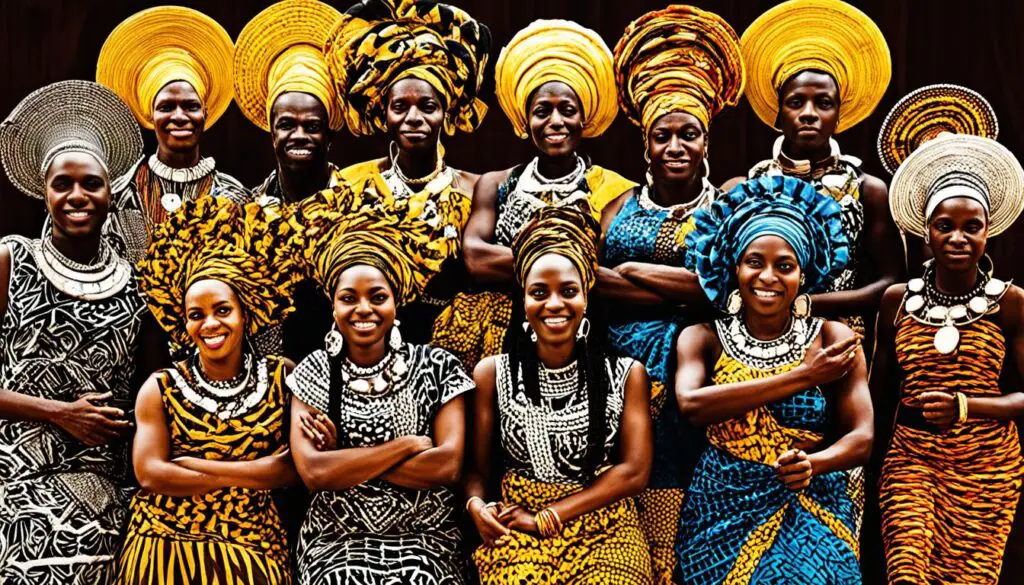
Preserving Cultural Identity Through Language
Language acts as a gateway to understanding a culture’s values, traditions, and beliefs. It forms an integral part of identity, providing a sense of belonging and solidarity within the community. Through the continued use and preservation of their languages, the Cameroon, Congo, and Western Bantu peoples strive to maintain their unique cultural identity in a rapidly changing world.
The diverse linguistic landscape mirrors the diversity of the people, highlighting their resilience and adaptability. It is through language that stories are shared, songs are sung, and wisdom is imparted. By embracing and celebrating their linguistic heritage, these communities ensure that their traditions and way of life continue to thrive.
Culinary Traditions
Indulge in the tantalizing flavors of Cameroon, Congo, and the Western Bantu peoples as we explore their rich culinary traditions. From hearty stews to aromatic spices, each dish tells a story of history and culture.
The vibrant cuisine of Cameroon reflects the country’s diverse geographical regions. Coastal dishes feature an array of fresh seafood, such as grilled fish served with plantains and spicy tomato sauce. Inland, you’ll find dishes like Ndolé, a flavorful stew made with bitter greens, nuts, and your choice of meat.
In Congo, the culinary scene is influenced by the country’s agricultural abundance. Plantains, cassava, and yams form the base of many dishes. One popular dish is Moambe, a rich stew made with chicken or beef, cooked in a sauce made from palm nuts, and served with fufu, a starchy staple.
The Western Bantu peoples have their own unique culinary traditions that vary across the different ethnic groups. In the Democratic Republic of Congo, Mbika is a popular dish made with dried cassava leaves, palm oil, and various meats. Each bite is a harmonious blend of flavors and textures.
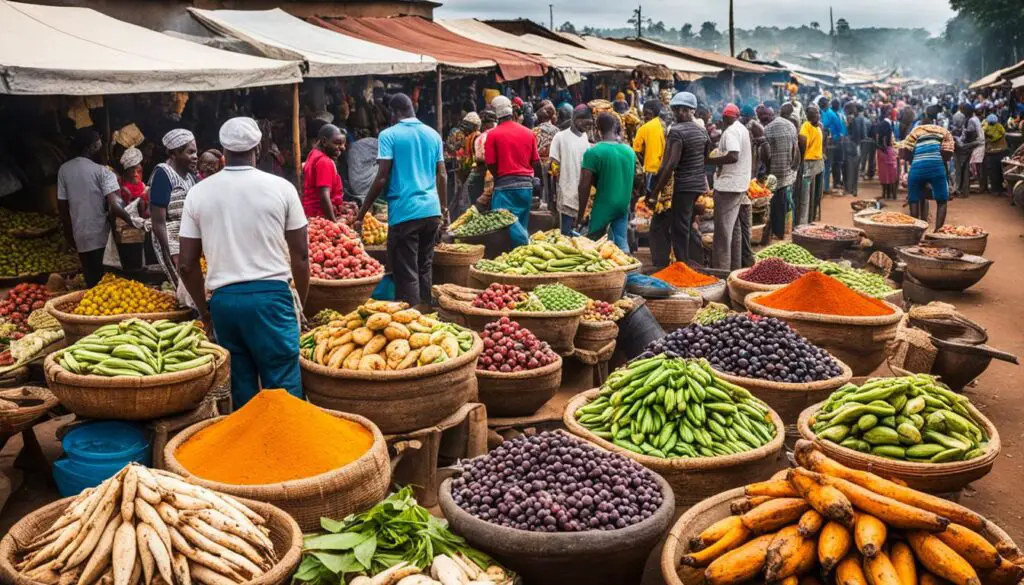
From earthy spices to the delicate balance of sweet and savory, the culinary traditions of Cameroon, Congo, and the Western Bantu peoples are a true reflection of their vibrant cultures. Join us as we embark on a gastronomic journey through these diverse cuisines.
Festivals and Celebrations
Prepare to immerse yourself in the vibrant festivities and celebrations of the Cameroon, Congo, and Western Bantu peoples. These cultures come alive through their colorful parades, traditional rituals, and joyful gatherings.
The festivals of these regions are a true spectacle, showcasing the rich heritage and cultural significance of the communities. It’s a time when people come together to honor their traditions, express their gratitude, and celebrate their shared identity.
One such remarkable event is the Ngondo Festival celebrated by the Duala people in Cameroon. This annual festival takes place in the coastal city of Douala, bringing together locals and visitors alike for a joyous celebration of their unity and ancestral heritage. The festival features spectacular boat races, traditional dances, and various ceremonies that pay homage to the ancestral spirits.
Another highlight is the Tata Nganga Festival celebrated by the Bantu people in Congo. This festival is a vibrant display of traditional beliefs and spiritual practices. It encompasses spirited dances, mesmerizing music, and the performance of sacred rituals by the Nganga, the traditional healer and spiritual leader of the community.
The Western Bantu peoples also have their unique celebrations, such as the Zebola Festival. This festival, held by the Kongo people, is a time of honoring the ancestors and seeking their blessings for abundance, good health, and prosperity. Intricate rituals, mesmerizing dances, and energetic drumming create an atmosphere of joy and reverence during this festive occasion.
These vibrant festivals and celebrations bring people together, fostering a sense of unity, pride, and cultural preservation. They provide an opportunity to pass down traditions from one generation to another, ensuring the cultural heritage remains alive and thriving.
Join in the excitement and immerse yourself in the traditions of the Cameroon, Congo, and Western Bantu peoples as you witness the sheer joy and beauty of their festivals and celebrations.
Conclusion
In conclusion, our exploration of the cultures of Cameroon, Congo, and the Western Bantu peoples has revealed a rich heritage that is as diverse as it is vibrant. Through delving into their traditions, arts, languages, and culinary delights, we have gained a deeper appreciation for the unique characteristics that make these communities so fascinating.
The traditions and practices of the Cameroon, Congo, and Western Bantu peoples reflect their historical influences, from colonialism to migrations, which have shaped their cultural identities. From the rhythmic beats of their music and dance to the intricate craftsmanship of their visual arts and crafts, these cultures are a true testament to the creativity and artistry of their people.
Language and communication play a vital role in these societies, acting as a means to preserve and pass down cultural knowledge and traditions. And let’s not forget the mouthwatering culinary traditions that offer a flavorful glimpse into their cultural tapestry, allowing us to experience the spices and ingredients that define their cuisines.
As we conclude our journey through Cameroon, Congo, and the Western Bantu cultures, it is clear that these communities are richly diverse yet interconnected. Their festivals and celebrations bring people together in joyous unity, showcasing the vibrant tapestry of their cultures. In embracing these traditions, we can appreciate the beauty and resilience of these fascinating communities.
FAQ
What is the significance of Cameroon, Congo, and the Western Bantu peoples?
Cameroon, Congo, and the Western Bantu peoples are regions and communities with rich cultural heritage and diverse traditions. They offer a fascinating glimpse into the vibrant cultures of Africa.
What can I expect to learn about in the geographical overview section?
The geographical overview section provides an understanding of the locations of Cameroon, Congo, and the Western Bantu peoples. It explores the significance of the regions in shaping the cultures we will explore.
How have historical influences shaped the cultures of Cameroon, Congo, and the Western Bantu peoples?
The historical influences section highlights the impact of colonialism and migrations on the cultures of Cameroon, Congo, and the Western Bantu peoples. It delves into the historical factors that have contributed to the rich heritage of these regions.
What traditional practices and beliefs will be covered in this article?
This article explores a variety of traditional practices and beliefs of the Cameroon, Congo, and Western Bantu peoples. It covers rituals, ceremonies, spiritual beliefs, and customs that have been passed down through generations.
What will be discussed in the music and dance section?
The music and dance section delves into the vibrant musical traditions and diverse dance forms of Cameroon, Congo, and the Western Bantu peoples. It explores the cultural significance of these artistic expressions.
What can I expect to see in the visual arts and crafts section?
The visual arts and crafts section showcases the creativity and craftsmanship of the Cameroon, Congo, and Western Bantu peoples. It features intricate wood carvings, colorful textiles, and other forms of artistic expression.
How does language play a role in these cultures?
Language is an essential component of any culture. The language and communication section explores the diverse languages spoken by the Cameroon, Congo, and Western Bantu peoples and highlights the significance of communication within these communities.
What culinary traditions will be covered in this article?
This article takes you on a gastronomic journey through the culinary traditions of Cameroon, Congo, and the Western Bantu peoples. It introduces staple dishes and traditional cooking techniques that showcase the flavors of these vibrant cultures.
What festivals and celebrations will be discussed?
The article explores the vibrant festivals and celebrations of the Cameroon, Congo, and Western Bantu peoples. It showcases colorful parades, traditional rituals, and the cultural significance behind these joyous occasions.
What will the conclusion section reflect on?
The conclusion section reflects on the rich heritage of the Cameroon, Congo, and Western Bantu peoples that has been explored throughout this article. It emphasizes the diversity and vibrancy of these fascinating cultures.